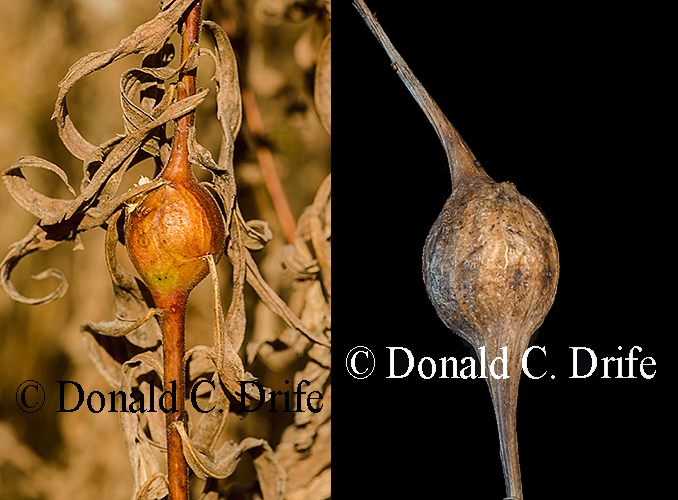
The Goldenrod Spherical Gall is caused by the Tephritid Fly also called the Goldenrod Spherical Gall Fly (Eurosta solidagunis). In late spring the Tephritid Fly lays eggs on the surface of the stem of a Goldenrod (Solidago spp.). When the egg hatches the larva burrows into the stem and its saliva causes the goldenrod to grow a spherical mass of tissue that protects the larva and provides it with food. The larva passes through three stages until it reaches full size. In the fall it chews a tunnel that the adult fly will use to exit the gall in late spring. This tunnel is just short of the outer skin of the gall. The debris from this tunnel is not eaten and if you cut open a gall you will often find this “sawdust.” When the weather warms, the larva pupates and the adult flies emerge in late spring.
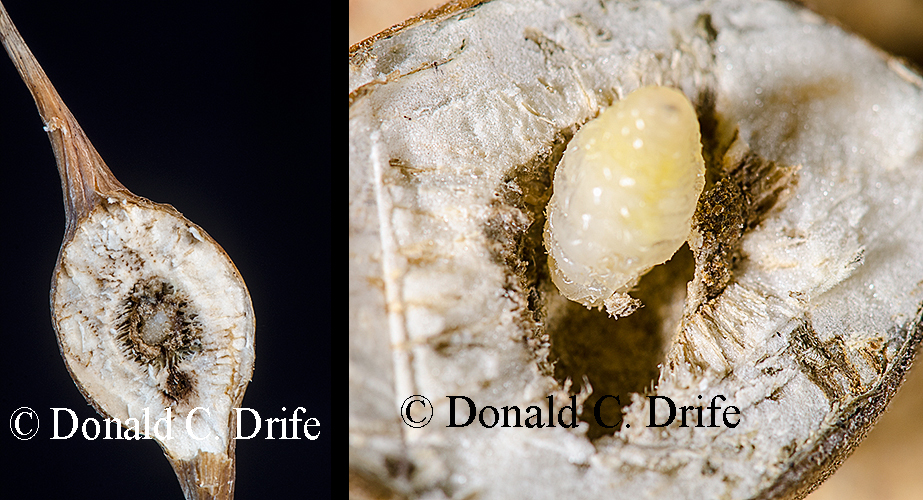
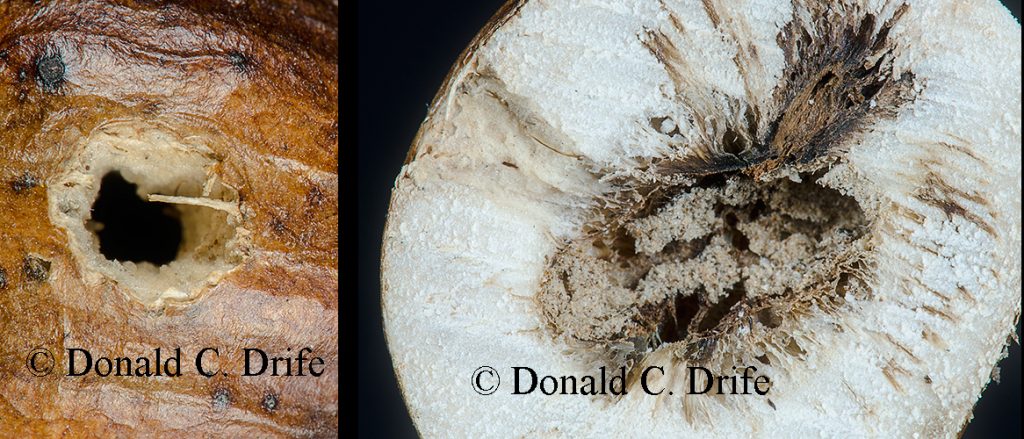
Chickadees and Downy Woodpeckers feed on the larva in the winter. Chickadees peck the gall and attempt to locate the exit tunnel. They break through the skin and grab the larva. Downy Woodpeckers will peck through the gall if the Goldenrod’s stem is heavy enough or enlarge the exit tunnel if they can find it.
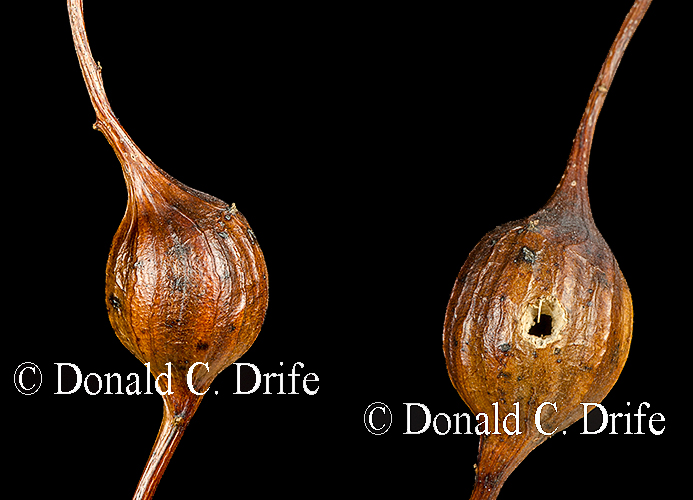
In the Royal Oak Arboretum the galls are found on mostly on Late Goldenrod (Solidago gigantea) and occasionally on Canada Goldenrod (S. canadensis) but this fly will use other large goldenrods.
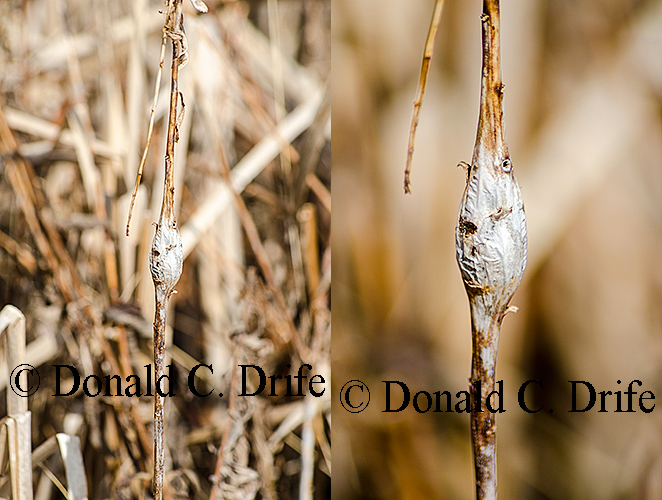
Spindle Gall (Gnorimoschema gallaesolidaginis) is a similar. It is an elongated gall also found on Goldenrod. The Goldenrod Elliptical-Gall Moth forms this gall. It overwinters as eggs on dried leaves. The larva hatch in the spring, chew into the Goldenrod’s stem, and the moths emerge in the fall. This gall is reported only on Late Goldenrod and Tall Goldenrod (Solidago altissima). Some studies indicate that the moth might actually be two species that look identical but feed on different goldenrod species.
My naturalist friend Mary Kleiss, asked me about this gall. As a girl she went ice fishing with her dad using the larva from the Goldenrod Spherical Gall as bait. Mary died recently and I miss her. She had a keen eye and an unending curiosity. She knew the uses of wild plants: whether it was edible, a dye plant, or had other uses. I enjoyed touring her garden and several blog posts are a result of these trips or conversations with her. I dedicate this blog to her and to her sense of wonder.
Copyright 2019 by Donald Drife
Webpage Michigan Nature Guy
Follow MichiganNatureGuy on Facebook
